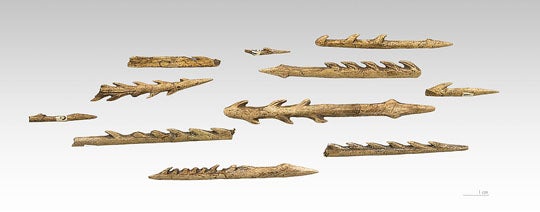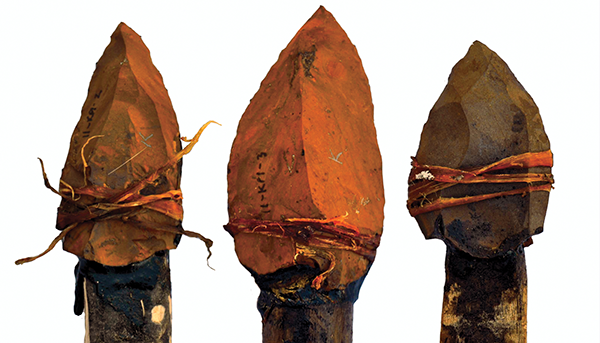
Climate change and humans

If the weather changes with seasons throughout the year where you live, your wardrobe likely does too. You bundle up with a jacket and scarf in winter and strip down to a bathing suit during the summer. Whether you realize it or not, clothes are a technology that is vital to humans. We’re the only mammal species that can live in almost any environment on Earth, mostly due to our clothing.
Technology was also important to the survival of early members of our species, Homo sapiens. Early Homo sapiens had to cope with huge swings of climate over the last 200,000 years. The archaeological record shows us that many new tools or technologies appeared with new climates. This is probably because climate change causes food resources to change. So, a food that was once abundant may later be gone or vice versa.
The Middle Stone Age record shows us how early humans started eating new foods when climates changed. At Katanda, a site in the Democratic Republic of the Congo, barbed harpoons for fishing and a bunch of fish bones were found. These remains show us that some early Homo sapiens were relying on fish for most of their diet by 90,000 years ago.

Pinnacle Point, a site in South Africa, shows us that 70,000 years ago humans were making microliths. These small, sharp points were likely mounted to arrows and shot with a bow. So far, the archaeological record shows that Homo sapiens are the only species to have produced projectile technology. Such technology would have let early humans hunt large and dangerous animals, like buffalo, from a distance. This would reduce the risk of getting hurt. Species like Neanderthals, who never used projectile technology, were in great danger when they would hunt with hand-held spears.
Be Part of
Ask An Anthropologist
By volunteering, or simply sending us feedback on the site. Scientists, teachers, writers, illustrators, and translators are all important to the program. If you are interested in helping with the website we have a volunteers page to get the process started.

